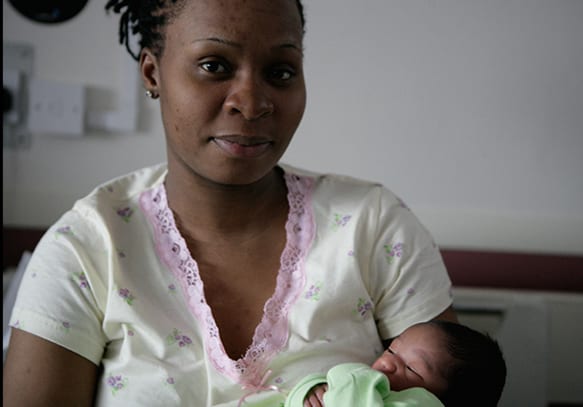Transcript – First stage of labour
The First stage can be broken down into the Latent phase and the Active phase. The Latent phase is the early part of your labour and can consist of irregular contractions that can come and go. The contractions can settle down for long periods of time and you will be able to rest in between.
It might feel like you are experiencing period-like pain or backache to begin with, and usually means that changes are starting to happen to your body. The cervix, or womb, is like a long tube (2-3cm long), and during these early stages of labour, it begins to shorten and go from being thick to paper thin – this is known as ‘effacement’. The latent phase refers to the period of effacement and dilatation from 0-4cm.
The Latent phase can take a few days, particularly for first time mothers, as the contractions slowly start to build up, becoming more regular and more painful as the cervix begins to stretch and open up to 4cm. For women who have had a baby before, this phase can be much quicker, lasting around 6 hours or even shorter.
You will hear the phrase ‘tightenings’, which refers to the mild contractions of the muscle in your uterus that you begin to experience as you start in labour. They are infrequent to begin with, occurring around every 20 minutes and lasting around 20 seconds during the latent phase. You will feel these contractions begin at the top of your uterus and spread out, almost like a wave across your uterus, slowly becoming stronger. These muscles contract, but they do not relax completely after each contraction, resulting in the cervix being gently pulled upwards, which makes it dilate. At the same time, the contractions slowly push the baby further down the pelvis and the pressure of baby’s head against the cervix encourages your body to release more Oxytocin hormone. Oxytocin is a hormone produced by the brain as well as the placenta and membranes surrounding your baby and it helps your labour to progress. Its production is inhibited by stress, which is why it is important to remain as calm as possible throughout labour, taking time to remember that you are in control.
The Latent phase is followed by the Active phase of the first stage of labour, which is more intense and is normally shorter than the latent phase. You will hear staff refer to ‘established labour’ and this is what they mean. The Active first stage of labour is when the cervix opens from 4cms to 10cms to allow for the baby to pass through. You can read more about the active phase, ‘Tips and advice for the first stage of labour’ and ‘Pain relief in the Latent phase’ on our website.
Remember, if you have any concerns, for example if you are unsure whether you are in labour, your baby’s movements have changed or you think your waters have broken, you can always speak to a midwife, using the contact numbers on your maternity notes.






